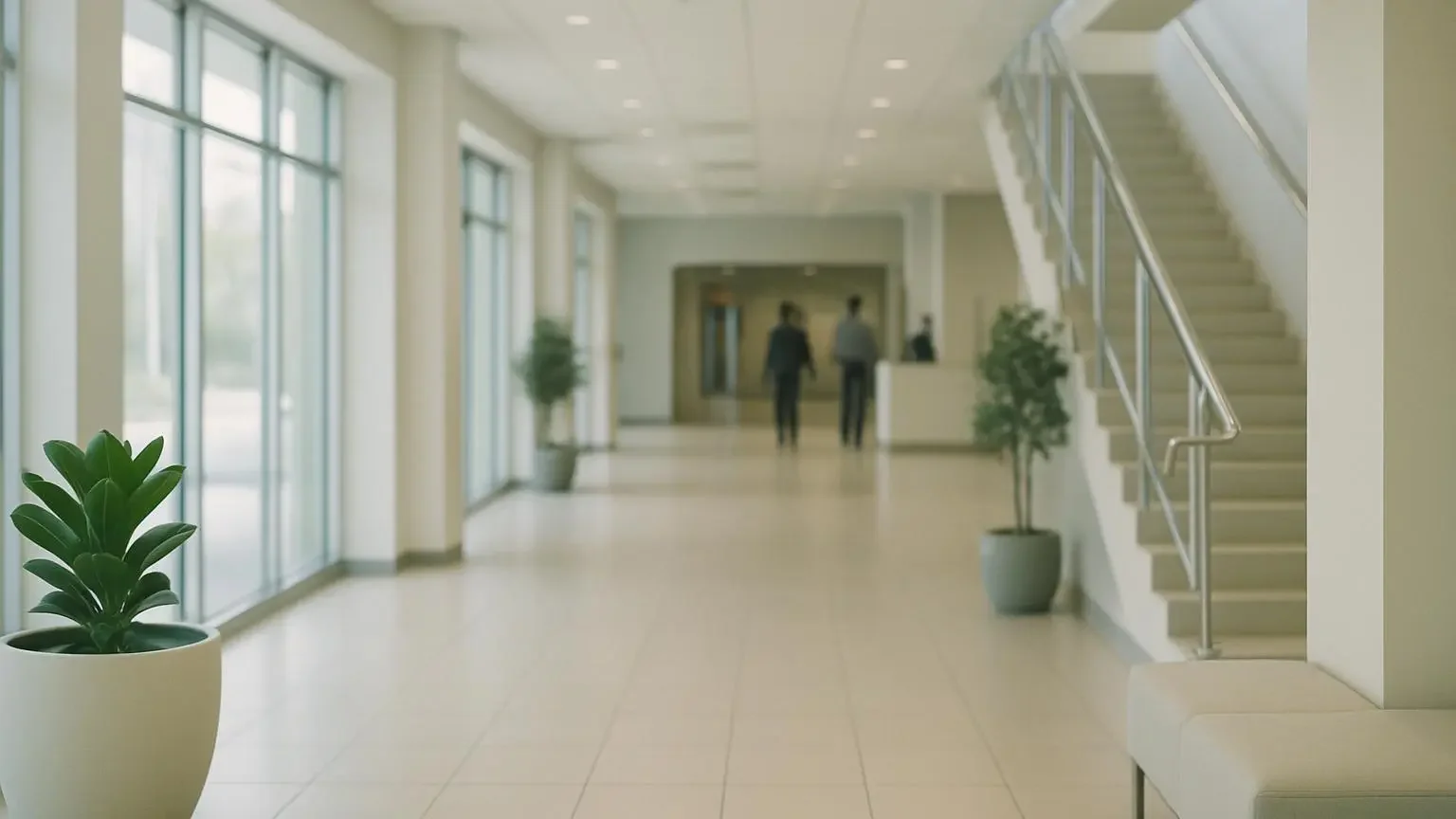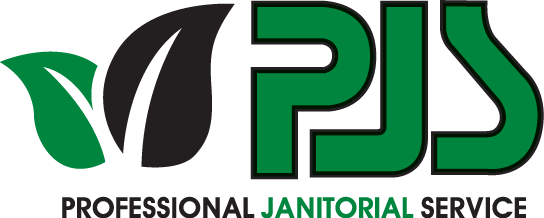Cleaning Maintenance Management: What You Need to Know
 Cleaning maintenance management is the ongoing, strategic process of planning, executing, and overseeing cleaning tasks to keep facilities healthy, safe, and operating smoothly.
Cleaning maintenance management is the ongoing, strategic process of planning, executing, and overseeing cleaning tasks to keep facilities healthy, safe, and operating smoothly.
For facility managers, it means having structured systems that protect assets, support compliance, and safeguard staff and visitor wellbeing.
Documented cleaning programs help reduce risks, extend facility life, and improve satisfaction scores. If you're responsible for a building in Houston—whether an office, school, church, airport, or medical space—an effective cleaning maintenance management program is essential for consistent results and peace of mind.
Understand What Cleaning Maintenance Management Means for Your Facility
Cleaning maintenance management impacts your facility’s health, reputation, and operational costs. Let’s get practical. You need a system that does more than check boxes—it must deliver results that keep occupants safe and assets protected. Here’s what sets a strategic program apart:
What a real maintenance system brings:
- Proven longevity: Facilities running routine, managed cleaning plans see asset life go up by 20%. Floors, fixtures, and equipment last longer because small issues get handled before they snowball.
- Satisfaction built on facts: Retail and hospitality spaces with scheduled, transparent cleaning earn higher satisfaction scores and repeat customers. Cleanliness is never invisible. It’s measured by every visitor.
- Fewer accidents and claims: Effective cleaning protocols lower slip-and-fall incidents by 40%. Take OSHA’s word—safe floors and clear walkways equal happier, more productive teams.
- Healthier air, stronger teams: Consistent attention to detail cuts allergy and absentee rates. Employees work better in dust-free, disinfected spaces.
- Ready for inspection: Documented programs prove compliance in audits and reduce stress when regulators walk through. The right record at the right time keeps you in the clear.
Consistent, proactive maintenance doesn’t just protect your image. It’s insurance for your budget, your people, and your peace of mind.
Why a Proactive Approach to Cleaning Maintenance Management Matters
A reactive model leaves you exposed. Emergency cleans burn through budget. Surprise equipment failures disrupt operations. Your standards slip, your reputation takes a hit, and costs soar. We work with Houston leaders who shifted to a proactive plan—now, their facilities run smoother, losses shrink, and risk stays controlled.
Risk Reduction: Safety and Cost Control
We see firsthand how proactive policies stop issues before they escalate.
- Fewer breakdowns: IFMA’s stats show sites on a preventative strategy suffer 15% fewer equipment failures tied to dirt and neglect. Unplanned downtime means unhappy tenants or guests—don’t settle for it.
- Lower emergency spending: Scheduled cleaning cuts deep cleans by two-thirds. Eliminate budget shocks and get more bang for every dollar.
- Compliance stays easy: Quarterly risk reviews and daily logs directly lead to fewer fines. Your team is always ready for a visit from any regulator.
Maximizing Value
With every task logged, risk spot identified, and routine dialed in, your facility fights back against rising costs and unpredictable headaches. In public health crunches, proactive teams keep doors open and customers safe—delivering uninterrupted service no matter what.
How to Build an Effective Cleaning Maintenance Management Program
Big results start with clear goals and data-driven planning. Facility managers need a method they can explain, measure, and adjust. We recommend breaking it down into actionable steps.
Set Goals and Identify Needs
Don’t guess. Instead, perform a facility assessment to find every risk zone, high-touch surface, and compliance mandate.
Build the System and Document Everything
Strong cleaning programs follow written schedules and use detailed checklists. Digital solutions, like cloud-based work tracking, increase completion rates by 25% over pen and paper.
Quality Controls and Smart Technology
Use regular site inspections, quality audits, and real-time reporting. These don’t just flag issues—they spotlight high performers and create a culture of accountability.
Smart Steps for Lasting Impact
- Conduct need assessments to uncover hidden cleaning risks.
- Create customized checklists to fit your sector’s unique needs.
- Use cloud platforms to track, document, and escalate daily work.
- Run regular audits and pass/fail reviews to hold teams accountable.
- Assign roles clearly—tasks never fall through the cracks.
With these steps, managers quickly spot patterns, reduce inefficiencies, and prove their ROI to ownership.
What Distinguishes Best-in-Class Cleaning Maintenance Management Providers
Let’s get real. The right partner doesn’t just mop floors—they remove risk, preserve trust, and set a relentless standard.
What to Look for in a Provider
- Standardized processes and training: These providers reduce errors and infection risk. We train crews to the highest industry standards, resulting in 20% fewer mistakes and better results for you.
- In-house teams, not subcontracted labor: Our W-2 model means you get vetted, loyal staff who take pride in your facility. Their background checks, stability, and company-backed benefits translate to higher security and better retention.
- Innovative controls: Color-coded equipment, EPA-approved green products, and contamination prevention are non-negotiable. We invest in every detail for safety and sustainability.
- Transparent, real-time communication: Our reporting lets you see exactly what happened, when, and by whom. Data builds trust, speed, and fast fixes if anything ever falls short.
PJS of Houston’s Innovative Cleaning System means site-specific plans, team accountability, and quality assurance built right in—so your building standards don’t slip.
Address Sector-Specific Challenges in Cleaning Maintenance Management
Different environments raise unique expectations. Medical, educational, industrial, and faith-based facilities don’t face the same risks. We know that because we manage hundreds of diverse sites each year. Your plan should reflect your sector’s needs, rules, and schedules.
Real-world sector examples:
- Medical sites: Require infection prevention, HIPAA compliance, and hospital-grade disinfection. Consistently applied protocols cut infection rates and keep patient trust high.
- Schools: Depend on after-hours cleaning to prevent illness spread. Research proves improved cleaning lowers absenteeism among staff and students.
- Airports: Need cleaning teams with secure area access and flexible hours. Our teams work around flight peaks and sensitive zones.
- Industrial: Call for OSHA-compliant processes and PPE for every cleaning tech. Custom protocols lower violations by half and boost morale.
- Churches and public spaces: Discretion, scheduling for events, and respect for sensitive areas matter most. Our techs provide quiet, unobtrusive care on your timeline.
Our experience in Houston spans all these settings. We help you design programs that protect your brand, meet your compliance goals, and respect your business’s unique mission.
When you tailor cleaning to your environment and people, excellence follows.
How Technology and Data Analytics Are Transforming Cleaning Maintenance Management
Facility managers want less guesswork, more control. Modern cleaning maintenance runs on data, not assumptions. Technology is reshaping how you spot issues, plan resources, and prove compliance every day.
Why Smart Cleaning Works
We see the difference when you swap paper logs for real-time dashboards and analytics.
- Targeted effort: Occupancy sensors steer teams to high-traffic areas. This cuts pointless work by up to 35% and keeps critical spaces spotless.
- Faster fixes: AI-driven alerts speed up cleaning response by 60%. No more waiting until complaints pile up.
- Predictable savings: Data guides preventive upkeep, slashing equipment downtime and stretching capital budgets by up to 15%.
- Mobile transparency: Digital checklists show you what’s done—right now. No more after-the-fact surprises.
With smart tools and real-time reporting, you’re ready for every audit and faster to resolve every issue.
The Overlooked Role of Employee Programs and Cleaning Culture in Success
Your cleaning program is only as good as your people. Facility managers frustrated by missed details or high turnover need to start with culture. Here’s how top teams deliver reliability and care, year after year.
Build a Team That Stays
When you invest in professional development, training, and support, performance climbs.
- Lower turnover: We provide ESL classes, pay advances, and family-based support—resulting in staff retention up to 30% above average. Teams get to know your building inside-out.
- Higher accountability: Internal promotions and skill-building mean staff solve problems fast. Audit scores rise, and complaint rates fall.
- Consistency: Happy teams stick around and consistently deliver. Fewer strangers walking your halls—more trusted faces upholding your standards.
Facility managers benefit directly. Reliable teams mean less retraining, better continuity, and fewer gaps in service.
High-performing cleaning teams are built, not bought. Invest in people if you want great results every week, not just after an inspection.
Prioritize Sustainability and Health in Cleaning Maintenance Management
Facility leaders in Houston care about health and environmental impact. A sustainable cleaning strategy benefits your people and your brand.
Make Green Cleaning Standard
Real results come from using non-toxic chemicals, HEPA vacuums, and water-smart tools.
- Healthier air: Switching to HEPA and green products bumps indoor air quality scores by 25%. That’s fewer allergy complaints and a stronger wellness story for your board.
- Client appeal: Corporate clients and stakeholders now demand sustainability. In surveys, 65% count green cleaning as a top five selection factor.
- Lower utility bills: Efficient equipment cuts energy and water usage, saving up to 15% yearly.
- Earn certification: LEED-aligned cleaning delivers tangible value—more points toward green building status and a real differentiator for your organization.
Occupant safety, environmental goals, and compliance thrive with a sustainable program.
Implement Actionable Steps for a Smarter Cleaning Maintenance Program
Great systems run on discipline, communication, and visibility. You want to prevent problems, not chase after them. Let’s break it down:
Keys to Daily Consistency
- Standardize with checklists for every area, from carpet cleaning to restrooms. Task completion jumps by nearly 20%.
- Maintain equipment on schedule—daily, monthly, annually. This keeps your tools working and cuts repair costs long-term.
- Build feedback channels: Encourage direct comments from tenants and staff. Issues get flagged and fixed 35% faster.
- Benchmark your outcomes: Rate your performance against industry data and peer sites to spot gaps and top performers.
- Document everything. When an audit or complaint arrives, you have instant proof and a clear story.
Discipline in daily routines protects you. When you document, you win every audit and hold every team accountable.
Recognize the Signs Your Facility’s Cleaning Maintenance Management Needs an Upgrade
Are you struggling with rising complaints, asset failures, or compliance issues? These are your warning signals. Don’t let small cracks turn into costly problems.
Know When to Take Action
- Increased complaints or survey drops mean your process has blind spots. It’s time to tighten documentation and oversight.
- High staff turnover signals a broken culture or missing systems. Stable teams deliver reliable results.
- Unplanned repairs or surprise breakdowns often reveal skipped preventive maintenance.
- Repeated fines or missed inspections demand a system overhaul, not another quick fix.
- Facilities that upgraded to systematic, digital cleaning management cut costs by 15% and saw higher user satisfaction.
Proactive upgrades mean fewer fire drills, less stress, and a safer building for everyone.
Conclusion: Rethink Cleaning Maintenance Management as Strategic Value
Cleaning maintenance management is a high-stakes, high-value priority. It’s not an afterthought—it’s your first defense against risk, rising costs, and damage to reputation. Elevate your strategy, invest in systems, and support your teams.
Our promise at PJS of Houston is clear: We deliver expertise, technology, and a people-first culture that help you win on every metric. A proactive, disciplined approach safeguards your facility and lets your organization thrive. Start raising your cleaning maintenance standards today.
